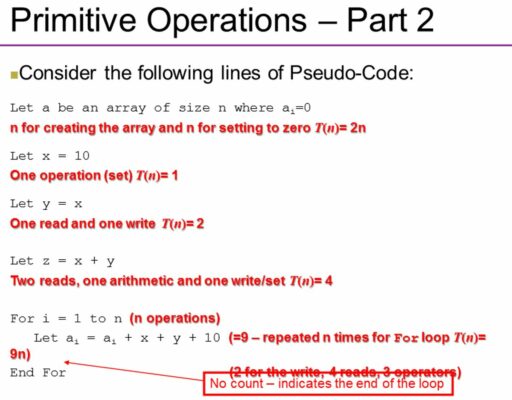Table of Contents
When your midsize company is on the path to becoming data-driven, mastering the art of database normalization is crucial. This comprehensive guide will delve into the intricacies of organizing your relational database efficiently, ensuring data integrity, and optimizing performance. From the foundational principles to advanced techniques, and the pivotal decisions between normalization and denormalization, we will explore how to tailor your database design to serve your business needs effectively.
Key Takeaways
- Database normalization is a systematic approach to reduce redundancy and enhance data integrity in relational databases.
- Understanding normal forms is essential for structuring databases efficiently and preventing common data anomalies.
- Advanced normalization techniques, such as BCNF, 4NF, and 5NF, address complex relationships and further optimize data integrity.
- The choice between normalization and denormalization depends on specific business requirements and performance considerations.
- Regular maintenance and evolution of database design are crucial for operational efficiency and adapting to changing business needs.
Understanding the Fundamentals of Database Normalization

Defining Database Normalization
Database normalization is a systematic approach aimed at organizing data in a database to reduce redundancy and improve data integrity. It is the cornerstone of a robust relational database design. The process involves decomposing tables and establishing relationships between them, ensuring that each table represents a single subject or entity.
- First Normal Form (1NF): Eliminates duplicate columns from the same table.
- Second Normal Form (2NF): Removes subsets of data that apply to multiple rows of a table and places them in separate tables.
- Third Normal Form (3NF): Divides tables into smaller tables with relationships to reduce the redundancy and dependency.
Normalization is a balancing act. While striving for a fully normalized database, it’s essential to consider the performance implications and the specific needs of your business.
Normalization is not just about adhering to theoretical principles; it’s about applying these principles in a way that serves the operational efficiency and analytical clarity of your organization. Data normalization is crucial for efficient data analysis, involving techniques such as removing redundancy, logical grouping, resolving inconsistencies, and formatting data.
The Role of Normal Forms
Normal forms serve as the backbone of database normalization, providing a series of guidelines to reduce redundancy and improve data integrity. Each normal form addresses a specific type of anomaly in database design, ensuring that data is stored efficiently and can be accessed reliably.
- 1st Normal Form (1NF): Ensures atomicity of columns, prohibiting repeating groups or arrays.
- 2nd Normal Form (2NF): Builds on 1NF by removing partial dependencies; non-primary-key columns must depend solely on the primary key.
- 3rd Normal Form (3NF): Requires that all columns are directly dependent on the primary key alone, not on other columns.
While the first three normal forms are commonly applied, the higher normal forms like BCNF, 4NF, and 5NF are used more selectively, often in complex databases where advanced data structuring is necessary.
Understanding and applying the correct normal form is crucial for a robust database design. It is a delicate balance to maintain data accessibility while minimizing redundancy, and the normal forms are the tools that guide database architects in achieving this balance.
Balancing Normalization with Performance
In the quest for the perfect database design, one must navigate the trade-offs between normalization and denormalization. Normalization aims to minimize redundancy and ensure data integrity, but it can lead to increased complexity in query operations. Conversely, denormalization can enhance performance by reducing the number of joins, but it risks introducing data inconsistencies.
A hybrid approach often emerges as a practical solution, striking a balance between data integrity and query performance.
When considering how to balance these two methodologies, it’s important to evaluate the specific use cases of your database. Here’s a quick guide to help you decide:
- Normalization is well-suited for databases with frequent updates and where data integrity is paramount.
- Denormalization is preferable for databases that prioritize fast read operations, often used in reporting and analytics.
Ultimately, the decision should align with the specific needs of your business and the nature of your data operations.
The Normalization Process: Step-by-Step
Identifying Primary Keys and Relationships
The process of identifying primary keys and relationships is a critical step in database normalization. Primary keys serve as the unique identifiers for each record in a table, ensuring that no two rows are identical. Foreign keys, on the other hand, establish the necessary links between tables, reflecting the underlying relationships such as one-to-one, one-to-many, or many-to-many.
The logical design phase is where the precision of primary keys, foreign keys, and unique constraints is established, acting as a bridge to the physical database implementation.
Understanding the differences between these keys and the types of relationships they support is essential for a robust database design. Here are some key distinctions:
- Primary Key: Uniquely identifies each record in a table and cannot be null.
- Foreign Key: Links records between tables and can represent different types of relationships.
- Unique Key: Ensures that all values in a column are different, but unlike a primary key, it can accept null values.
Once primary keys and relationships are identified, the next steps involve eliminating redundant data and ensuring data integrity through the application of normal forms.
Eliminating Redundant Data
The process of eliminating redundant data is a critical step in database normalization. It involves restructuring the database to ensure that each piece of information is stored only once, thereby reducing storage requirements and improving data retrieval efficiency.
- Reduction of Redundant Data: By breaking down tables and creating relationships, normalization minimizes the duplication of data across the database.
- Enhanced Data Integrity: Properly normalized databases enforce consistency, ensuring that updates, deletions, or insertions of data do not lead to anomalies.
Embracing data modeling best practices, such as using the smallest data types and leveraging de-normalization judiciously, can further optimize storage and query performance.
While the goal is to streamline storage and maintain data integrity, it’s important to balance these efforts with the system’s overall performance. Nested repeated columns, for example, offer a way to maintain a de-normalized table design without introducing redundancy, but they come with their own set of considerations.
Ensuring Data Integrity Through Normal Forms
Ensuring data integrity is a critical aspect of database design, and normal forms are the cornerstone of this process. Normal forms define the rules and conditions for organizing data into tables, which are essential for a robust database structure. By adhering to these forms, databases can achieve a high level of data integrity, minimizing the chances of data anomalies.
The normalization process typically involves several stages, each corresponding to a different normal form. Here’s a simplified view of the process:
- 1st Normal Form (1NF): Ensures that all data in a column is atomic, eliminating repeating groups or arrays.
- 2nd Normal Form (2NF): Requires that the table is in 1NF and all non-primary-key columns are fully dependent on the primary key.
- 3rd Normal Form (3NF): Ensures that all columns are directly dependent on the primary key and not on other columns.
While the first three normal forms are commonly used, the fourth and fifth normal forms are applied less frequently but are crucial for certain complex scenarios.
By reducing redundant data and enhancing data integrity, normalization not only streamlines storage but also ensures that operations such as updates, deletions, or insertions do not introduce inconsistencies. It is the meticulous application of these principles that underpins the effectiveness of database normalization.
Advanced Normalization Techniques

Beyond Third Normal Form: BCNF, 4NF, and 5NF
After mastering the first three normal forms, database designers encounter Boyce-Codd Normal Form (BCNF), which is an extension of the third normal form (3NF) ensuring that every determinant is a candidate key. This form is crucial for real-time applications where data integrity is paramount.
The journey of normalization doesn’t end with BCNF. The Fourth Normal Form (4NF) addresses multi-valued dependencies by ensuring that for each non-key attribute, there is a one-to-one relationship with the primary key. The steps to achieve 4NF include removing multivalued dependencies and creating separate tables for them.
Finally, the Fifth Normal Form (5NF), also known as the pinnacle of normalization, is concerned with eliminating join dependencies. Achieving 5NF often involves breaking down tables into smaller entities to eradicate all data redundancy. However, due to its complexity, 5NF is seldom used in enterprise applications.
While normalization is a database design technique that reduces data redundancy and eliminates undesirable characteristics, it’s essential to consider the balance between normalization and performance, especially when dealing with complex forms like BCNF, 4NF, and 5NF.
Handling Complex Relationships
In the realm of database normalization, handling complex relationships is a critical step towards ensuring data integrity and reducing redundancy. Complex relationships, such as many-to-many interactions, require careful consideration to maintain the principles of normalization while also serving the practical needs of the database.
For instance, consider a scenario where attributes (e.g., type, distance, and date) repeatedly occur together for the same user. These repeating groups are then extracted and organized into separate tables to adhere to normalization principles. The process typically involves the following steps:
- Identifying the repeating groups of data.
- Creating a new table for each group with a unique identifier.
- Establishing relationships between these new tables and the original table through foreign keys.
By meticulously structuring your data, you can prevent potential data inconsistencies and redundancy. A hybrid approach, combining the strengths of both normalization and denormalization methods, is often a practical solution. This approach seeks to harness the advantages of each while minimizing their respective drawbacks, offering a nuanced perspective for effective database design.
Normalization in Practice: Case Studies
In the realm of database design, normalization is a balancing act. It’s about making informed decisions that align with the operational goals of a business. For instance, a transactional database where data integrity is paramount may lean heavily towards normalization. Conversely, a database designed for analytics might favor denormalization to expedite query performance.
Normalization should be applied judiciously, considering the nature of the data and the frequency of updates.
A hybrid approach often emerges as a practical solution, blending normalized and denormalized structures to optimize for both integrity and performance. Below is a simplified case study comparison:
| Case | Updates Frequency | Data Integrity Needs | Preferred Approach |
|---|---|---|---|
| A | High | Critical | Normalization |
| B | Low | Moderate | Hybrid |
| C | Low | Low | Denormalization |
Each case reflects a unique set of requirements that dictate the database structure. The key is to assess the impact of normalization on business operations and tailor the database design accordingly.
Normalization vs. Denormalization: Making the Right Choice

Understanding the Trade-offs
In the realm of database design, understanding the trade-offs between normalization and denormalization is essential. Normalization aims to optimize data integrity and eliminate redundancy, which can lead to more complex queries and increased read times. Conversely, denormalization may improve query performance by reducing the number of joins, but it risks introducing redundancy and potential data inconsistencies.
A hybrid approach often represents a practical solution, striking a balance between the integrity of normalization and the efficiency of denormalization.
The decision to normalize or denormalize should be informed by the specific requirements of your business operations. Here are some key considerations:
- Performance: How critical are read and write speeds to your application?
- Consistency: Is data integrity more important than query speed?
- Scalability: Will the database need to scale, and how might normalization impact this?
- Maintenance: What are the implications for ongoing database maintenance?
Ultimately, the choice should support efficient reporting and analytical processes, aligning with the overarching goals of your business.
When to Normalize: Scenarios and Considerations
Normalization should be considered when the primary goal is to ensure data integrity and minimize redundancy. Frequent updates to the data and the need for consistent and accurate information make normalization a priority. For instance, transactional databases, where each record is critical, greatly benefit from normalization.
- Minimize duplicate data: Essential to avoid unnecessary data bloat and confusion.
- Avoid data modification issues: Ensures that updates, deletions, or insertions do not lead to data anomalies.
- Data integrity: Maintains the accuracy and consistency of data across the database.
Normalization is a balancing act, and while a fully normalized database is the ideal, sometimes slight denormalization is considered for performance reasons. It’s crucial to understand the trade-offs and make decisions based on the specific needs of your business.
When to Denormalize: Scenarios and Considerations
Denormalization is a strategic approach that can be particularly beneficial in certain scenarios. When the primary goal is to speed up read operations, especially in systems where data is predominantly read rather than written, denormalization can significantly reduce query times by minimizing the need for complex joins.
- Data reads and queries need to be quickly executed.
- The system is primarily used for reporting and analytics.
Adopting a hybrid approach, which combines elements of both normalized and denormalized methods, can be a practical solution. This method aims to leverage the strengths of each while minimizing their respective weaknesses.
It’s important to recognize that denormalization may introduce some data redundancy and potential inconsistencies. Therefore, it should be considered when the benefits of faster query execution outweigh the risks of data anomalies. Decisions should be based on the specific needs and goals of your business.
Optimizing Database Design for Your Business Needs

Assessing the Impact of Normalization on Business Operations
When considering the implementation of database normalization, it’s essential to evaluate its impact on business operations. Normalization can significantly enhance data integrity, ensuring that the data is accurate and consistent across the database. This is particularly important for businesses that rely on transactional data, where precision is paramount.
However, normalization also comes with trade-offs. A fully normalized database may lead to complex queries that require multiple joins, potentially slowing down read performance. This can be a critical factor for businesses that require fast access to data for real-time decision-making. Below is a comparison of scenarios where normalization and denormalization might be appropriate:
- Normalization is well-suited for databases with frequent updates and changes.
- Denormalization may be beneficial for read-heavy databases where performance is a priority.
Ultimately, the decision to normalize or denormalize should be made with a clear understanding of the business’s specific needs and the potential impact on operations. It’s a balancing act between maintaining data integrity and ensuring efficient data retrieval.
Customizing Database Structure for Operational Efficiency
The efficiency of a database is deeply intertwined with its structure. A well-designed schema is pivotal for operational efficiency, ensuring that data retrieval and manipulation are both swift and reliable. By customizing the database schema to fit the specific needs of your business, you can achieve a balance between normalization and performance that suits your operational requirements.
When optimizing your database, consider the following points:
- Define clear purposes and requirements for your database to ensure that the schema aligns with business objectives.
- Implement a schema that supports scalability and easy maintenance, allowing for future growth and changes without significant overhauls.
- Test the schema thoroughly to confirm that it meets performance benchmarks and operational needs before full-scale deployment.
By carefully selecting and indexing columns based on the most frequent query patterns, you can optimize column-based databases for better performance.
Remember, the goal is to create a database schema that not only prevents data anomalies and redundancy but also provides a robust framework for efficient data management. This balance is essential for maintaining a competitive edge in today’s data-driven landscape.
Best Practices for Database Maintenance and Evolution
Maintaining an efficient and scalable database schema is crucial for the ongoing success of any data-driven business. Regularly review and update your database schema to ensure it continues to meet the evolving needs of your business operations. This includes revising indexes, evaluating query performance, and considering partitioning strategies to optimize data access and storage.
- Define clear objectives for your database schema to align with business goals.
- Employ appropriate levels of normalization, usually up to 3NF, to balance performance and data integrity.
- Document all changes meticulously to maintain a clear history of schema evolution.
- Perform routine checks to ensure ACID properties are consistently upheld.
By aligning these considerations with your business strategy, you can select an RDBMS that not only meets your current data management needs but also supports future growth and innovation.
Adherence to best practices is not a one-time task but a continuous process that involves monitoring, assessment, and adjustments. By staying informed about the latest trends and technologies, and by examining case studies or seeking advice from industry peers, you can ensure that your database remains robust, reliable, and ready to handle future challenges.
Conclusion
In conclusion, mastering data normalization is an essential skill for anyone involved in the design and maintenance of relational databases. Throughout this comprehensive guide, we have explored the intricacies of normalization, from its fundamental principles to the practical application of normal forms. We’ve seen how normalization reduces redundancy, enhances data integrity, and ensures efficient data storage. However, we also acknowledged the delicate balance between normalization and denormalization, emphasizing the importance of context in choosing the right approach for your database. Whether you’re dealing with transactional data that demands high integrity or analytical processes that benefit from denormalization, the key is to understand the trade-offs and make informed decisions. With the knowledge and insights gained from this guide, you are now better equipped to optimize your databases for both performance and reliability, ensuring that your data-driven solutions are built on a solid foundation.
Frequently Asked Questions
What is database normalization?
Database normalization is a systematic approach of decomposing tables to eliminate data redundancy and safeguard data integrity. It involves dividing a database into two or more tables and defining relationships between the tables, guided by principles known as ‘normal forms’.
Why is normalization important in database design?
Normalization is important because it reduces redundant data, enhances data integrity, and ensures updates, deletions, or insertions do not lead to anomalies or inconsistencies. It helps in creating a robust and efficient database design.
What are normal forms in database normalization?
Normal forms are a set of rules for structuring relational databases. The most commonly used normal forms are the First Normal Form (1NF), Second Normal Form (2NF), and Third Normal Form (3NF), which each build upon the rules of the previous form to further reduce redundancy and improve data integrity.
Can you explain the trade-offs between normalization and denormalization?
Normalization often comes with the cost of more complex queries and potential performance issues due to the increased number of joins. Denormalization may improve performance by reducing the complexity of queries but can lead to data redundancy and integrity issues. The choice between them depends on the specific needs of the business and the application.
When should a database be denormalized?
A database should be denormalized when the performance of read operations is critical and outweighs the risks of data redundancy and integrity issues. This is typically considered in systems where frequent updates and changes to the data are less common and quick retrieval is essential, such as in reporting databases.
How does database normalization affect business operations?
Database normalization can streamline storage, improve data consistency, and reduce the risk of errors in data manipulation. However, it can also lead to more complex queries and potential performance trade-offs. Businesses must assess the impact of normalization on their operations and balance it with their specific data management and performance needs.





